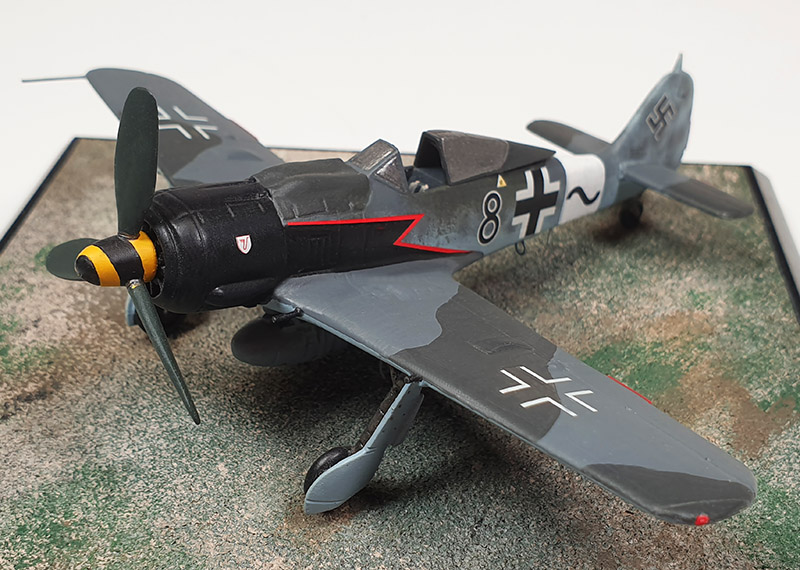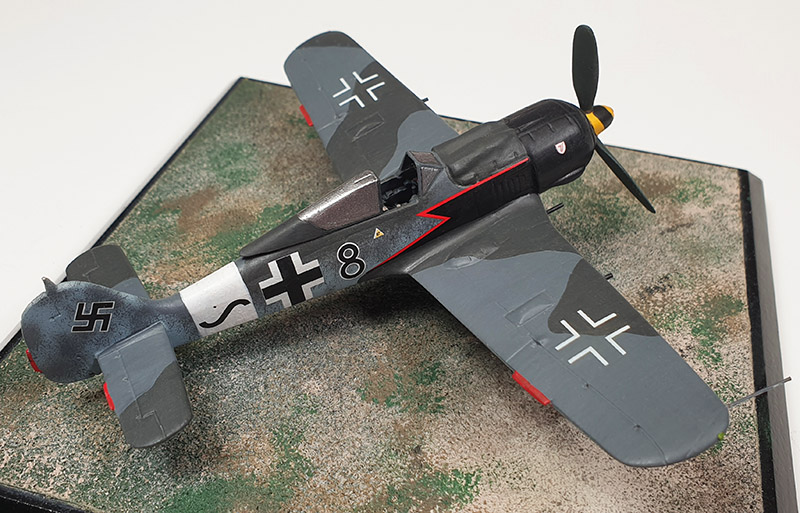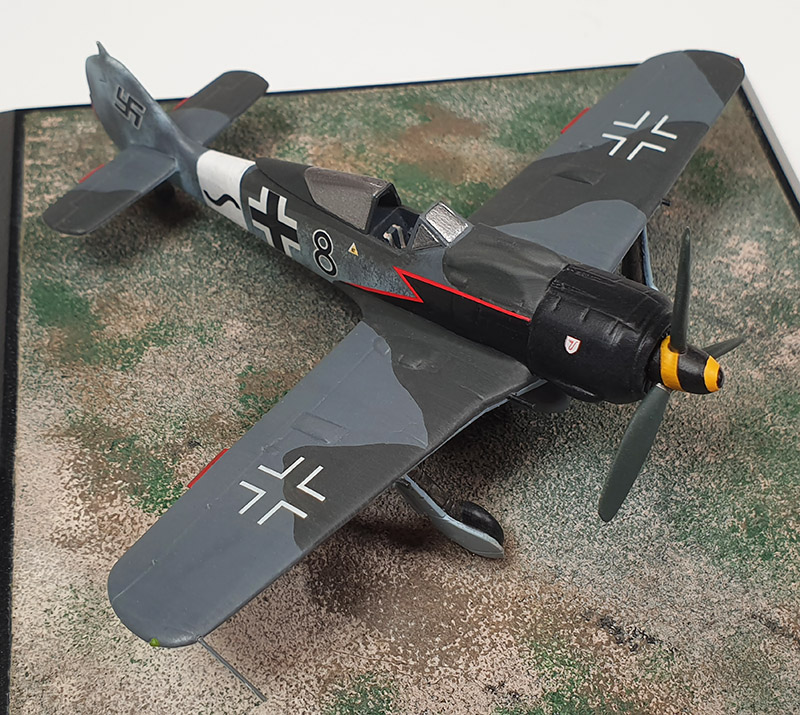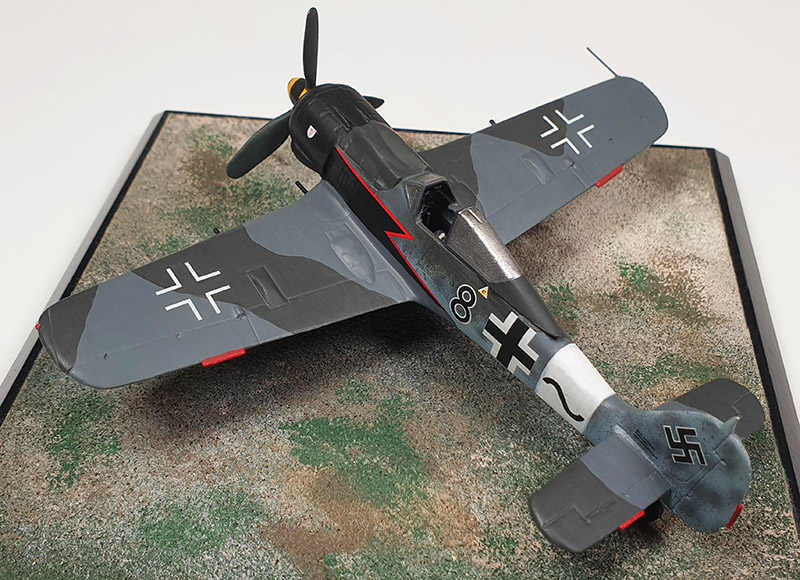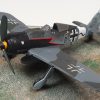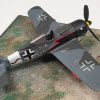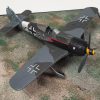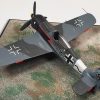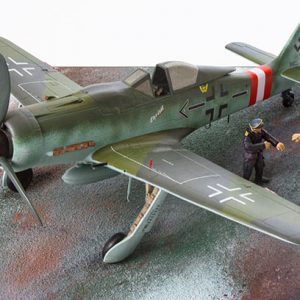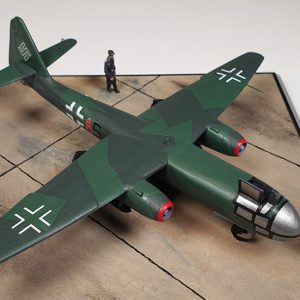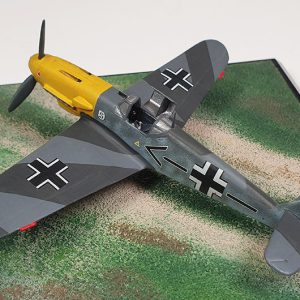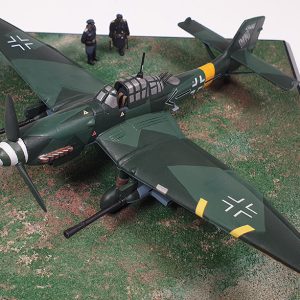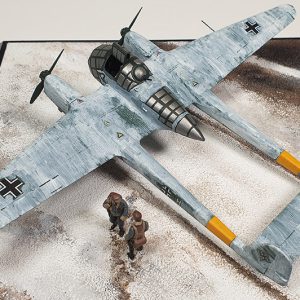Focke-Wulf Fw 190A-8/R8 ‘Black 8’
IV(sturm)/JG.3 Uffz. Willi Maximowitz Dreux June 1944.
With the increasing pressure applied by the daylight raids by USAAF heavy bombers, a new approach to tactics to be used by defending fighters was suggested in 1943 by Major Heinz-Gunter von Kornatski, who after serving with the Bf 109-equipped Jagdgeschwader 52 joined the staff of the General der Jagdflieger, Generalmajor Adolf Galland. His view was that the necessary heavy blows would be best landed by a close formation of armoured fighters flown by groups of determined pilots who would be prepared if necessary to ram the target. This was not seen as a suicide mission; it was expected that a toughly-built fighter could cause sufficient damage to a relatively lightly-built tail surface to destroy the bomber, while the attacker would still survive. Recruiting for the first unit took place in October 1943, with the candidates being interviewed by Major von Kornatski, and about three dozen were selected for training; the unit to be known as Sturmstaffel 1 was formed at Achmer and was equipped with Focke-Wulf Fw 190A-6s. To fit the aircraft better for the close-combat role extra armour was added to the cockpit area and armoured glass to the windscreen and quarter-lights. The next six months were spent refining the tactics and where necessary the equipment, with operations generally undertaken with the co-located IV/JG.3. By the end of April it had been decided to disband the Sturmstaffel, and to fold its pilots and aircraft in to IV.(Sturm)/JG 3 to set up the first Sturmgruppe, which would be fully equipped with the Fw 190. The process of integration was still underway, with mixed success, when the Allies came ashore in Normandy on 6 June, 1944; in accordance with the Luftwaffe contingency plan as many fighter units of possible were transferred to the conflict area, and Hauptmann Moritz led his three Staffeln of IV.(Sturm)/JG 3 to Dreux, about fifty miles west of Paris. For the five days thay were there the aircraft had their underfuselage racks modified to carry 250 kg bombs for Jabo missions. It was then discovered that the unit should never have been detached from Germany, and on 15 June it flew home to Eisenstadt to carry on with its defence of the Reich duties. As flown by Unteroffizier Willi Maximowitz over the Normandy beaches, Focke Wulf Fw 190A-8 “Black 8” wears the white rear fuselage band of JG.3 with the “wavy line” of IV Gruppe, and a small “Udet Geschwader” badge on its black cowling. It also has the stylised black area behind the cowling which appeared on many 190s helping to conceal the exhaust stains, in this case with a thin red edge. Maximowitz was one of the early members of Sturmstaffel 1; on 30 July he was up against Fifteenth Air Force bombers whose target was Budapest, and their escorting P-38 Lightnings claimed four 190s. Maximowitz somersaulted on landing at Munich-Neubiberg, and was seriously wounded, but he did return to operations, and on 15 April 1945 claimed his last kills, a pair of Soviet Yak-3s, east of Berlin. Two days later Maximowitz’ formation was seen in close combat with Soviet fighters in the same area, from which none of the Focke-Wulfs returned.


